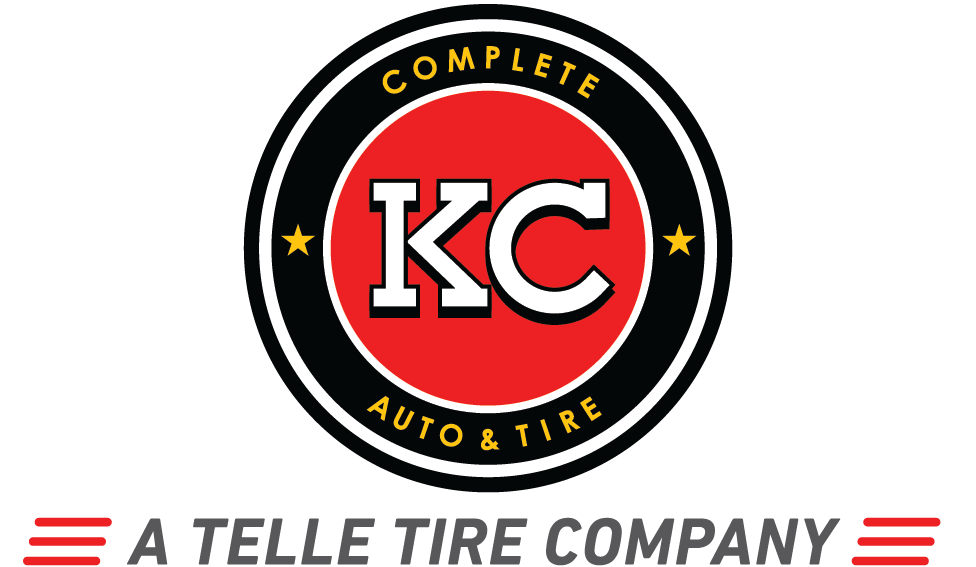Understanding the Impact of Spring Weather on Tire Performance
As winter fades and temperatures rise, many drivers look forward to spring road trips and weekend drives. However, the seasonal shift brings changes that can affect tire performance. Just as cold weather stiffens rubber and reduces pressure, warmer temperatures can lead to tire wear, fluctuations in air pressure, and potential safety concerns.
Fluctuating temperatures, lingering potholes from winter road conditions, and increased moisture can all damage tires. Understanding how spring weather affects tires, signs of potential damage to watch for, and how to maintain your tires and vehicle can help ensure you’re ready for the driving adventures ahead.
Cold Weather & Tire Longevity
Winter’s harsh conditions don’t just disappear with warmer weather—they can create lasting issues if left unchecked. Freezing temperatures cause tire rubber to harden, increasing the risk of cracks and reduced traction. Road salt and moisture accelerate tire deterioration, weakening sidewalls and leading to potential tread separation or blowouts.
Cold temperatures also cause tire pressure fluctuations, often resulting in underinflation. If not corrected, this can cause uneven wear, reducing fuel efficiency and overall performance. A thorough spring tire inspection is essential to catch and address these issues before they become serious problems.
Tire Wear in Warmer Months
As temperatures rise, tire rubber regains flexibility. However, if your tires sustained winter damage, that flexibility won’t restore them to peak condition. Existing cracks can expand, and uneven winter wear may worsen as the rubber softens.
Spring temperature fluctuations also cause increased tire pressure—warmer days can lead to overinflation, causing the center of the tread to wear more quickly. If tires were underinflated during winter, they may still wear unevenly, impacting handling and efficiency. Regular pressure checks help maintain optimal performance.
Spring Tire Inspection: What to Look For
A thorough inspection can prevent winter damage from escalating. Some common types of tire wear to look for that may be present after winter include:
- Tread Wear: Uneven patterns indicate past underinflation or overinflation.
- Cracks or Dry Rot: Exposure to freezing temperatures may cause cracks that worsen with heat.
- Sidewall Damage: Look for bulges, cuts, or abrasions from pothole impacts.
- Embedded Debris: Salt, gravel, and other road debris can cause punctures or slow leaks.
- Tire Pressure: Adjust inflation levels based on seasonal temperature changes.
If you notice significant wear or damage, schedule a professional inspection to ensure your tires are road-ready.
How to Assess Your Tires
- Tread Depth Test: Use the penny test: Insert a penny into the tread with Lincoln’s head facing down. If you can see the top of his head, your tread is too worn and it’s time for new tires.
- Sidewall Integrity: Run your hand along the sidewall to feel for any bulges or soft spots, which can indicate structural weakness.
- Overall Condition: Look for signs of aging, such as fading or brittleness, which may suggest the rubber is breaking down.
- Tire Pressure Check: Seasonal temperature fluctuations can cause tire pressure changes, so ensure your tires are properly inflated to manufacturer-recommended levels. If you added air to accommodate low tire pressure in winter, it could end up being too much air as temperatures rise.
Performing a post-winter tire inspection helps catch issues early, preventing more serious problems later. If you notice excessive tire wear or damage, or you’re not quite sure of the condition of your tires, schedule a professional inspection with knowledgeable tire experts to keep your vehicle road-ready.
Tire Damage in Spring: What You Should Know
Winter’s freeze-thaw cycle often worsens road conditions, creating potholes and increasing loose debris. This makes spring a high-risk season for tire damage. Common issues include:
- Punctures from Road Debris: Rocks, glass, and other materials revealed by melting snow can cause leaks.
- Sidewall Bulges: Hitting potholes can weaken the tire structure, leading to bulging and potential blowouts.
- Tread Separation: Existing winter wear combined with heat expansion may cause rubber delamination.
- Alignment Issues: Sudden pothole impacts can misalign wheels, leading to uneven tread wear.
To protect your tires:
- Maintain proper inflation levels.
- Avoid potholes when possible and drive cautiously over rough roads.
- Schedule a tire alignment check after severe impacts.
- Inspect tires regularly for punctures or bulges.
- Rotate tires every 5,000 to 7,500 miles to ensure even wear.
Tire Pressure Changes in Spring
Spring’s unpredictable weather leads to frequent temperature swings, which impact tire pressure. For every 10-degree change, tire pressure shifts by about 1 PSI. Properly inflated tires ensure:
- Even tread wear and improved fuel efficiency.
- Better traction and handling.
- Reduced risk of blowouts from overinflated tires or excessive wear.
Check your tire pressure at least once a month and adjust it according to the manufacturer’s recommendations.
How Temperature Affects Tire Pressure
Tire pressure changes by roughly 1 PSI (pound per square inch) for every 10-degree shift in temperature. That means a chilly morning followed by a warm afternoon could cause your tires to lose or gain pressure within just a few hours. If your tires were properly inflated for winter, they may become overinflated as warmer temperatures set in. If you let air out and then experience a cold snap, your tires are at risk of underinflation, which is equally problematic.
Maintaining proper tire pressure is essential for even tread wear, optimal traction, and fuel efficiency. When tire pressure isn’t maintained:
- Low tire pressure increases rolling resistance, which reduces fuel efficiency and causes uneven tread wear, particularly on the tire’s edges.
- High tire pressure leads to a stiffer ride, less traction, and excessive wear on the center tread, increasing the risk of a blowout.
Checking your tire pressure at least once a month can help prevent these issues. Always refer to your vehicle’s manual or the sticker inside the driver’s door for the correct PSI and adjust accordingly.
Spring Tire Care Tips
Warm Weather Tire Maintenance
Proper tire maintenance ensures a smooth ride, improves fuel efficiency, and extends the life of your tires. To extend tire lifespan and ensure safety:
- Rotate & Align Tires: Prevents uneven tread wear and maintains optimal road contact.
- Clean Off Winter Residue: Remove road salt and grime to prevent deterioration.
- Check for Structural Integrity: Look for signs of aging like fading or brittleness.
- Schedule a Professional Inspection: If unsure about your tire’s condition, consult an expert.
With proper maintenance, your tires will be ready for the road ahead, allowing you to enjoy spring driving with confidence.
Preparing Your Tires for the Spring Season with Telle Tire
Spring tire maintenance isn’t just about improving performance. It’s about ensuring safety, extending tire life, and optimizing fuel efficiency as temperatures rise. The weather changes can take a toll on your tires, making it essential to inspect for damage, monitor air pressure, and keep up with regular maintenance.
By making tire care a consistent part of your seasonal vehicle maintenance, you can prevent unexpected issues and enjoy a smoother, safer ride. For some drivers, switching to all-season or summer tires may be a smart choice for better grip and handling in warmer conditions. If you’re unsure whether a tire change is right for you, the Telle Tire experts can help you determine the best option for your vehicle.
Don’t wait until an issue arises. Check your tires now or schedule a professional spring tire inspection with Telle Tire. Find a location near you and ensure your car is ready for spring.


